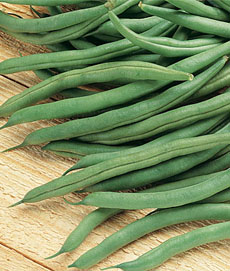TIP OF THE DAY: Green Bean & Potato Salad
|
If you’re thinking of potato salad for game day, how about upping the flavor, color, texture and nutrition with green beans, a.k.a. string beans and snap beans (more about that below).
Fresh green bean crops are harvested year-round, but are best in early winter, early summer and early fall. Beans picked early in the season are smaller and sweeter. As they mature, they lose flavor and get thicker and tougher. “The combination of green beans and red potatoes, sometimes known as Green Beans Pierre, is one of my go-to side dishes,” SAYS Preci D’Silva, who contributed the recipe to Taste Of Home. The recipe calls for dried herbs, but trust us: fresh herbs give a much more wonderful punch of flavor. You can use a combination of fresh and dried, depending on what you have on hand (e.g., fresh basil and parsley, dried tarragon). While this recipe uses an oil and vinegar dressing, you can also add green beans into mayonnaise-dressed potato salad. While the recipe was developed to serve warm, it is equally delicious at room temperature. Prep time is 30 minutes. Ingredients For 10 Servings |
Add crunch and flavor to potato salad (photo © Taste Of Home). |
|
|
_________________ *We love balsamic vinegar so much that we often use it, even though it adds a dark color. White balsamic, created to solve this problem, isn’t real balsamic, and doesn’t taste anything like it. Here’s more about balsamic vinegar. Preparation 1. PLACE the potatoes in a large saucepan; add water to cover. Bring to a boil. Cook, uncovered, for 10 minutes. Meanwhile… 2. WHISK together the oil, vinegar and seasonings in a large bowl. 3. ADD the green beans to the pot of potatoes; return to a boil. Cook 3-5 minutes longer or until the vegetables are tender. Drain. 4. ADD to the dressing and toss to coat. Stir in the tomatoes and onion. Serve warm. |
||
 Before breeding eliminated it, green beans had a fibrous “string” atop the long ridges and were known as string beans. Photo courtesy Burpee. |
GREEN BEANS OR STRING BEANS: THE DIFFERENCE String beans got their name because they originally had a string, a tough fiber that ran from one tip to the other. The string had to be removed before cooking. The task was onerous enough that the string was bred out of most varieties. But the name, handed down from generation to generation, lives on. The beans also got the name of snap beans, because when you bend them, they snap. There are two types of green beans: But whether bush or pole, raw green beans are tender enough to be eaten raw. They are a standard on our crudité platter, and whenever we have them on hand, we add them to green salads, other vegetable salads, grain salads and protein salads (chicken, egg, tuna, etc.). |
|
|
HOW TO HANDLE GREEN BEANS Here’s advice from Produce Pete:
|
||



